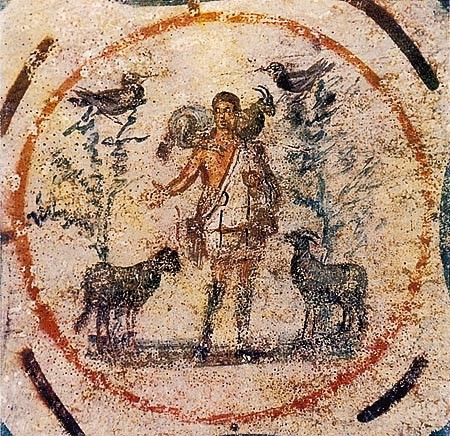Dear Friends,
I have, quite literally this Easter, gone down a rabbit hole!
Well, not a rabbit hole, exactly! I have been doing a course through Whitley College on Early Christianity in Context and I become very interested in catacombs!

I assume many of you, like me, were brought up on the story that the early Christians hid in the catacombs to avoid persecution. But apparently, this is not the case! The catacombs were very public places in the ancient world. Many people – not just Christians – were buried there.
The reasons early Christians gathered in the catacombs are far more interesting.
Firstly, in the first few centuries of Christianity, churches were not recognised as legitimate religious bodies. Therefore, they could not own property. Funeral societies, however, were allowed and could own cemetery property. So, in some cities Christians organised themselves into funeral societies and would gather for worship in cemeteries.
Secondly, the early Christians highly valued cemeteries because these were places where the heroes of the faith, those who had nurtured and encouraged and inspired the faith of the next generation, were buried, and so cemeteries were the place to gather for worship – worship that centred around communion – because the early Christians believed that communion joined them, not only to each other and to Jesus, but also with their ancestors in the faith.
So, it sounds strange to us, but cemeteries, places of death, were places that represented life for the early Christian church. You can see this celebrated in the first Christian religious art that is found in the catacombs. This image (left) of ‘The Good Shepherd’, a beardless youth in pastoral scenes collecting sheep was the most common of these images.
But perhaps it is not strange at all.
For this is what we celebrate over these “Great Three Days” as they are called in many traditions. As we gather on Maundy Thursday (8pm), Good Friday (9am) and Easter Sunday (10am), we remember that, just like the catacombs, this time of death, Jesus’ crucifixion, and death, is the place where we find new life – a new way of living.
It is in Jesus’ death that we find this new life. And it is – and this can be hard for us to experience and to understand – the moments of death in our lives when life most powerfully breaks through.
Like the verses we read two weeks ago in John 12. “ Very truly, I tell you, unless a grain of wheat falls into the earth and dies, it remains just a single grain; but if it dies, it bears much fruit.”
So – let me wish you a happy Easter – a time of discovering, in strange places, even in the darkest places, the light and the life of Christ.
Grace and peace,
Belinda